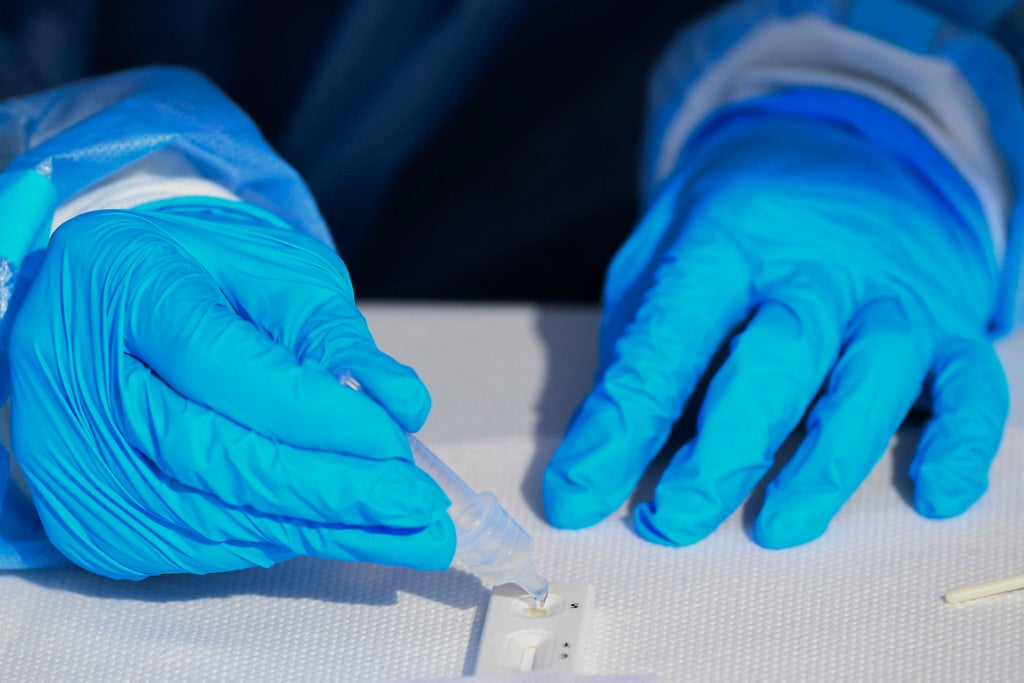
As the US enters a third year of the Covid-19 pandemic following an Omicron-fuelled surge of infections, public health officials are bracing for another spike in cases with the emergence of a more-contagious subvariant that has led to case surges in China and across some parts of Europe.
Meanwhile, states and cities across the US have largely relaxed public health measures, including mask and vaccine requirements, preparing the nation for a potentially major test of “living with Covid” while 1,000 Americans continue to die from the disease each day.
The BA.2 subvariant, also known as “stealth Omicron,” accounts for roughly 55 per cent of confirmed infections in the US as of 29 March, according to the US Centers for Disease Control and Prevention.
Scientists have attributed BA.2’s growth to its several key mutations; the gene for the spike protein on its surface has eight mutations not found in BA.1.
Researchers have determined that such mutations have made BA.2 more transmissible, not that it necessarily evades antibody protection.
Common symptoms of BA.2 infections appear to include a runny nose, headache, sore throat and fatigue, among other Covid-19 indicators including sneezing, a persistent cough, hoarseness, chills or shivers, unusual joint pains, fever, dizziness, brain fog, sore eyes, an altered or lost sense of smell, muscle pains, swollen glands, loss of appetite and chest pains.
As health officials study the subvariant’s spread, drugmakers Pfizer and Moderna have filed applications for emergency use authorisation with the US Food and Drug Administration for a second “booster” dose of their vaccines.
On 29 March, the agency approved fourth doses for people ages 50 and older. Americans with moderately or severely weakened immune systems also are eligible.
A vaccine regimen followed by a third “booster” dose has provided critical protections against severe disease, hospitalisation and death during the public health crisis, as studies begin to reveal their waning effectiveness and durability against different variants.
The seven-day moving average of confirmed Covid infections in the US has climbed to 27,895, an increase of roughly 4 per cent from the previous week, as of 29 March.
Roughly 65 per cent of Americans, or more than 217 million people, are considered fully vaccinated, according to the CDC. Nearly 97 million people from that group have received at least one “booster” dose. Roughly 23 per cent of the US has not received any vaccine doses.
Meanwhile, the White House has warned that the federal government has exhausted Covid-19-related funding to be able to buy additional booster doses and fund Covid testing without congressional action, prompting fears of a mounting crisis to combat the ongoing emergency.
At the same time, requirements around vital protections – like wearing well-fitting N95 or K95 masks indoors and in crowded spaces – are simultaneously dropping across the US.
European authorities relaxed such restrictions too early before they began seeing spikes in cases, according to the World Health Organization.
Hans Kluge, the organisation’s regional director for Europe, said 18 countries “are lifting those restrictions brutally, from too much to too few” rather than take more measured approaches.
The New York region, in which the CDC also includes New Jersey, Puerto Rico and the Virgin Islands for data collection, BA.2 is found in more than 70 per cent of tested samples.
Omicron remains the dominant variant in New York City, once the global epicentre of the virus, with its BA.2 subvariant accounting “for a modest but increasing number of cases in the city,” according to city health officials.
White House chief medical adviser Anthony Fauci has predicted a likely “uptick” of BA.2-related infections, as the relatively low number of confirmed infections compared to pandemic peaks mirrors the lull in Europe that preceded the current wave.
He told ABC’s This Week on 20 March that now is “no time at all to declare victory, because this virus has fooled us before and we really must be prepared for the possibility that we might get another variant.”
“We don’t want to be caught flat-footed on that,” he said.
White House Covid-19 Response Coordinator Ashish Jha said earlier this month that he is “not expecting a big surge here, but we’re gonna have to pay close attention and really be driven by data as we have throughout the whole pandemic.”
This story was initially published on 23 March and has been updated







